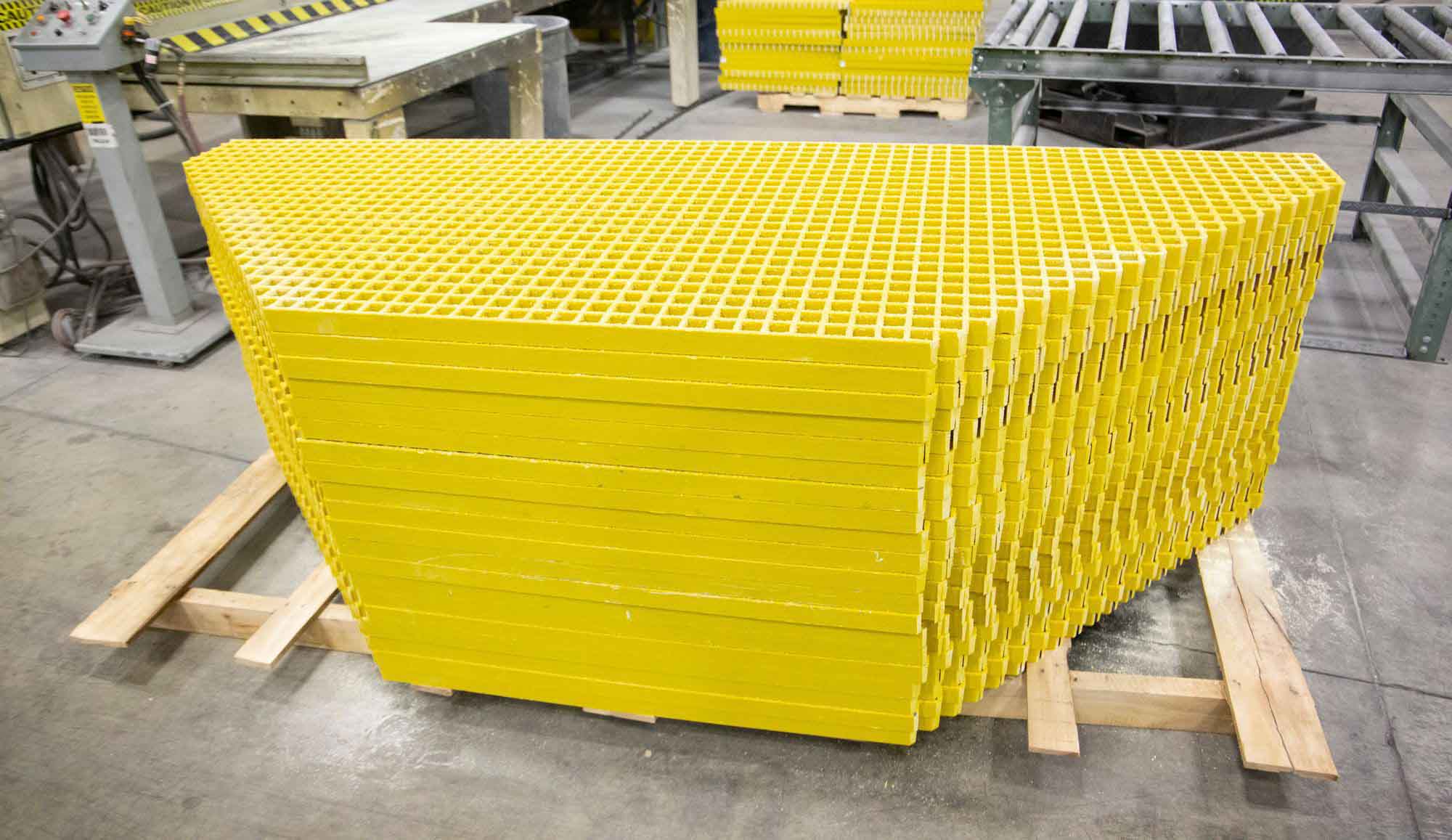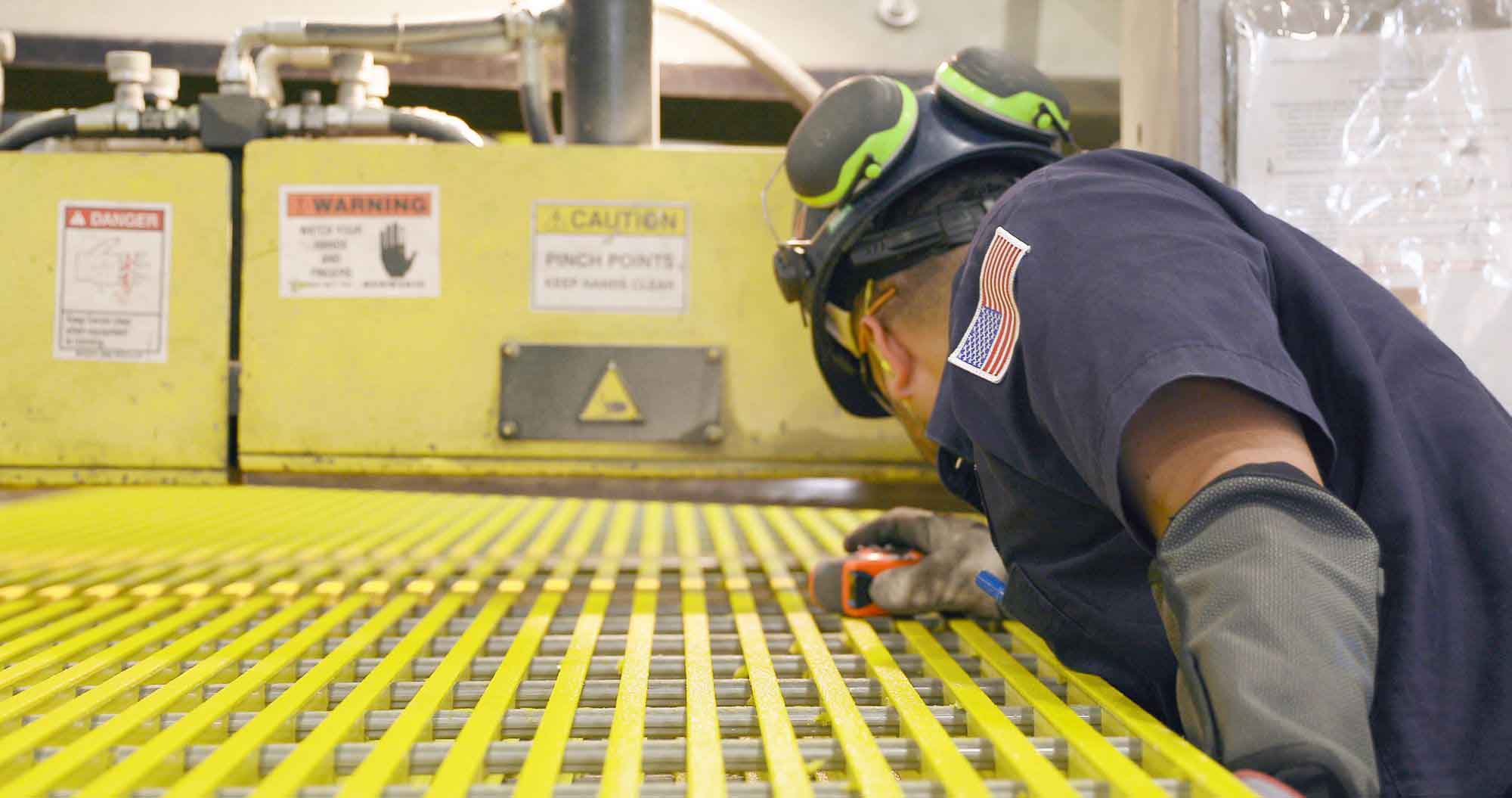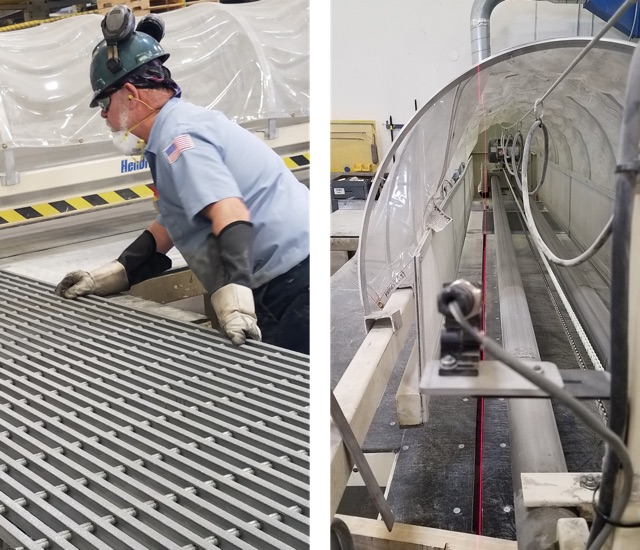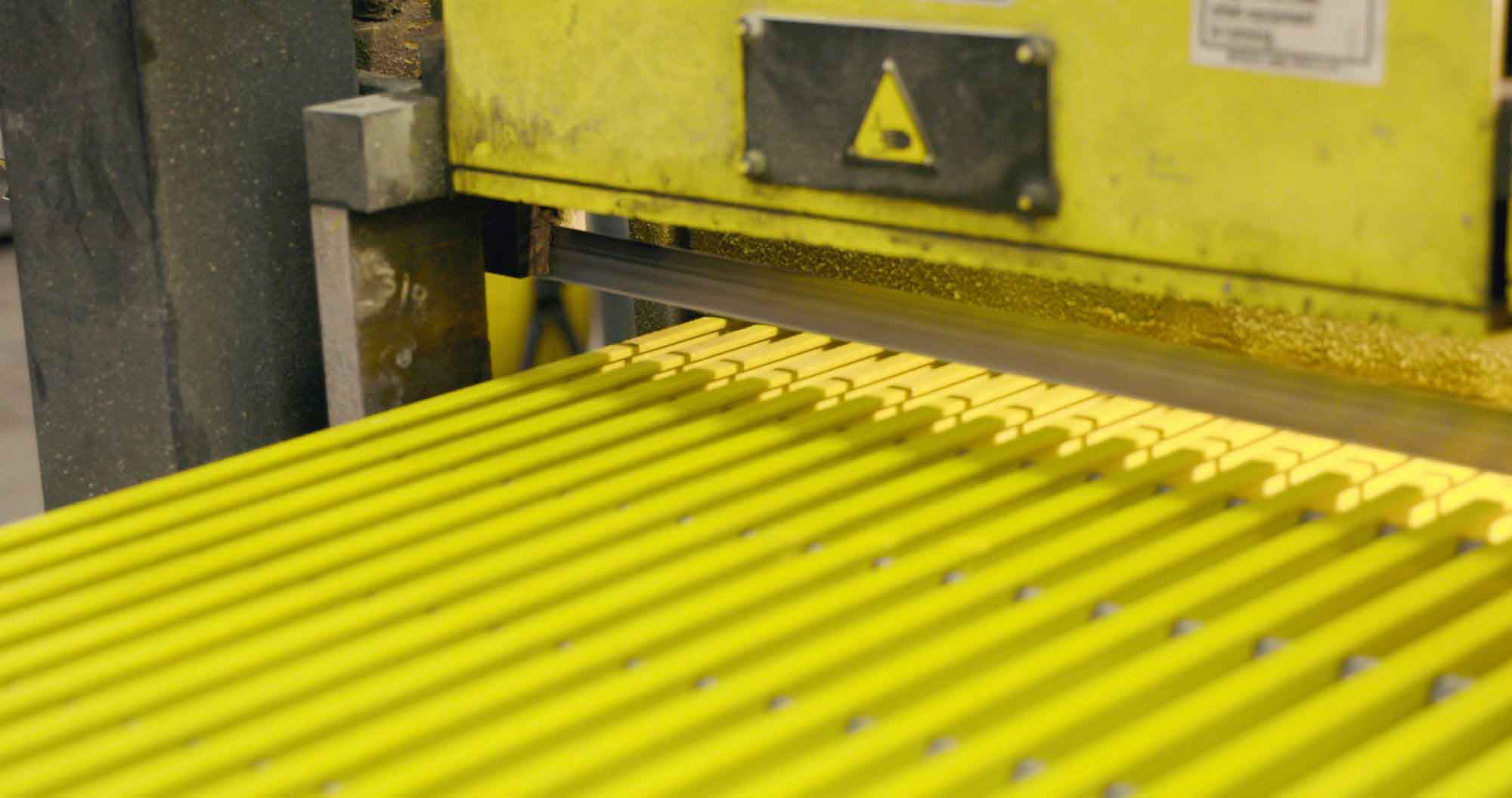Guide to Cutting Fiberglass Grating
- October 3, 2019
- 8 min
Fiberglass Reinforced Plastic
When choosing the right Grating for your application, you may be drawn to Fiberglass Grating for its versatility and durability. Fiberglass Reinforced Plastic (FRP) flooring items have several features that make them popular choices in a variety of industries and applications. While our 19 Metals Service Centers are all equipped and ready to cut Fiberglass to size, we frequently receive questions from our customers about the handling of Fiberglass and how to cut FRP Grating. In this post, we share some factors to consider when preparing and cutting Fiberglass Grating for your application.

What Hazards Accompany Fiberglass Dust?
When Fiberglass Grating is cut, it can introduce a hazardous dust into the air. This dust can contain particles of plastic resin and glass fibers, and exposure to these particles can be associated with a variety of health risks.
McNICHOLS takes several measures to protect associates involved in cutting Fiberglass. For example, these associates are required to wear protective equipment and operate machinery with a dust collection system for reducing airborne particles. If you are considering handling Fiberglass, it is essential to be aware of potential hazards and how to deal with debris safely.

Potential Health Risks of Cutting Fiberglass Grating
A necessary precaution when cutting Fiberglass is to reduce the skin’s exposure to dust. Dust particles can be small enough to become lodged in an individual’s pores, which can result in symptoms that include itchiness, rashes, welts, and inflammation. To avoid skin irritation, you can reduce dust contact by wearing clothes that completely cover the skin (like long sleeves, gloves, long pants, and high socks).
Eye protection, such as safety goggles, is also highly recommended. If dust particles come into contact with the eyes, you may experience itchiness and irritation. With dust particles present, it is vital to avoid rubbing the eyes, as this action may cause abrasions to the cornea. Instead, procedures for reducing or eliminating this dust suggest a thorough eye rinse. Contacting your doctor may also be necessary.
Lastly, individuals are encouraged to avoid inhalation of Fiberglass dust. These particles have been known to aggravate the Upper Respiratory System, including the nasal passages and throat. If inhaled, dust can also linger in the lungs, resulting in symptoms of asthma, bronchitis, or emphysema. For these reasons, a reliable mask or respirator will help protect the Respiratory System when fabricating Fiberglass Grating. Timely replacement of protective masks is also important.
Combustible Dust
In some conditions, certain types of fine dust can be susceptible to ignition and even combustion. When cutting Fiberglass, if the resulting debris is fine enough, not minimized properly, and exposed to an ignition source, it may pose a risk of explosion. Many guides recommend avoiding this danger by cutting Fiberglass in an environment with an efficient dust mitigation or collection system.

Containing Fiberglass Dust
There are types of equipment designed to mitigate airborne dust and improve the safety and efficiency of the cutting process. For example, McNICHOLS® Metals Service Centers have dust collection systems that work in conjunction with our Fiberglass Grating saws. Typically, a protective hood will cover the saw to prevent too much dust from dispersing. Then, a channel along the length of the blades gathers the dust as the saw creates it. This channel is connected to a collection system where debris is suctioned away through a series of ducts, then deposited in a receptacle for discarding later.

What Equipment and Supplies Are Needed when Cutting Fiberglass Grating?
Beyond a dust mitigation system, the Fiberglass fabrication process requires additional supplies. Primarily, it is important to choose the best blade for cutting Fiberglass Grating. Abrasive blades are ideal, as they will allow your saw to function more efficiently. Popular choices for abrasive instruments are diamond-tipped blades, which are designed for grinding down very dense materials such as concrete. Diamond blades are well-suited for cutting Fiberglass Grating because other tools can become dull quickly and need replacing more frequently.
After the cutting process has finished, it is recommended to treat the cut areas of the Fiberglass Grating with a finishing spray. Sealants, such as a Polyurethane spray, are standard when finishing raw edges.
Leave the Dust to Us!
If you are planning to cut Fiberglass Grating, we hope these tips will help guide you through the fabrication process. However, if you’re uncertain about safely handling and cutting Fiberglass Grating, the McNICHOLS fabrication team is always ready and eager to assist you!
Our highly-trained associates are prepared with machinery and equipment to cut your Fiberglass Grating safely and efficiently. Beyond cut-to-size panels, we also accommodate skew cutting, radius patterns, circles, and notches. Regardless of your Fiberglass cutting needs, our associates are always Inspired to Serve!® If you’d like to learn more, contact us at 855.318.8791, [email protected], or via Live Chat on mcnichols.com.







